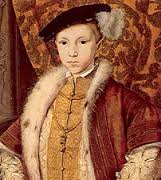Was Victorian London a 'Tale of Two Cities'?
At the time of the Industrial Revolution, London was significantly divided. In the Westend, the wealthy classes lived, with good, well paying and respectable occupations which resulted in them having enough money to be able to afford a nice home and other luxuries. On the other hand, the East end was home to the working class and below. The working classes had jobs which were usually harmful and for the majority of the time, did not pay enough for a sanitary abode and the necessary nutritious amount of food.
 |
| Victorian Westend |
One of the reasons why London was known as 'Two Cities', although geographically, they were just one, was because of the clothing. The people in the Westend could afford multiple bright and unique outfits because it was (and still is) considered to be an awful thing to be wearing the same garments as your peers. However, the people in the East end could only afford one outfit, poor of quality- normally second hand- and in quite dark, dull and cheap colours; it wasn't a worry to those living in poverty whether they wore the same clothes as everyone else, because there was far less choices than the rich enjoyed and that we enjoy in modern days. Because of the lack of difference in the clothing, crime, which was already a major problem in the East end. Both police and forensic technology were incredibly poor and to make matters worse, any witnesses could not totally describe the appearance of the criminal because there were so many people dressed the same! That is one of the reasons why the notorious yet mysterious 'Jack the Ripper' escaped after his revolting debut on the crime stage. Also Westend cholera.
 |
| Victorian East end |
nd streets were open spaces, beautifully clean, surrounded by expensive theatres and posh houses, as well as that, they had public transport such as trams and horses and carriages (Victorian equivalent of taxis). Whereas the East end had cramped streets linked together by mysterious back allies, they were covered in both human and animal faeces mingled with a thick layer of mud and sludge! As you can imagine, this spread diseases like
The nickname was inspired by the novel and play: 'The Tale of Two Cities' that was written by the famous 19th century author- Mr. Charles Dickens (1812- 1870), who was heavily influenced by the divide between the communities during his lifetime.


Comments
Post a Comment